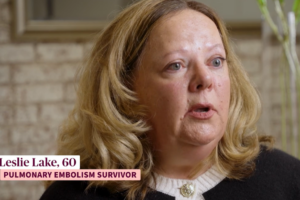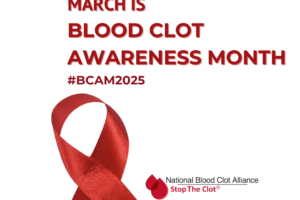DVT/PE Oncology Patient Prophylaxis Underutilized
Outpatients Surveyed Report Significantly Lower Utilization of DVT/PE Prophylaxis
The NBCA DVT/PE Awareness Survey also shows that, compared to inpatient respondents, outpatients surveyed report significantly lower utilization of DVT/PE prophylaxis. About one-third of inpatient respondents report they were given warfarin (38%) and/or low molecular weight heparin (31%), compared to significantly fewer inpatient respondents who said they were given warfarin (9%, p=<.05%) and/or LMWH (6%, p=<.05%). About half of inpatients report the use of compression hose (52%) or mechanical compression (52%), compared to less than one-quarter of outpatients who report the use of compression hose (22%, p=<.05%) or mechanical compression (16%, p=<.05%). Aspirin use was reported by 39% of oncology inpatients surveyed, compared to 20% (p=<.10%) of the outpatients surveyed.
According to Frederick R. Rickles, MD, Professor of Medicine, Pediatrics and Pharmacology and Physiology, The George Washington University, Washington, DC, currently, routine DVT/PE prophylaxis is not recommended for most oncology outpatients, making the disparities seen in DVT/PE awareness and prophylaxis between oncology inpatients and outpatients in this survey consistent with the published recommendations of most expert groups. These survey data make clear, however, the need to improve or optimize DVT/PE education programs and prophylaxis practices for all patients with cancer.
Dr. Rickles further explains that an increase in the prevalence of DVT/PE risk reduction programs, such as those mandated by the Joint Commission, and in response to the identification of DVT/PE as a “never event” by the Centers for Medicare & Medicaid Services, are likely responsible for the significantly higher reported use of DVT/PE prophylaxis reported by inpatients with cancer. According to Dr. Rickles – who is, as a member of NBCA’s DVT/PE Awareness Survey Steering Committee, presenting information about the survey findings at the ASCO Annual Meeting this week – patients with active cancer are at increased risk for DVT/PE, and the risks are greater among those who are hospitalized, undergo surgery, or receive cancer therapy.
DVT/PE in Oncology
- All patients with active cancer are at increased risk for DVT/PE, but the risk is greater for cancer patients who are hospitalized, have surgery, or undergo certain types of cancer treatment, such as chemotherapy or radiation.
- Without prophylaxis, 40% to 80% of surgical oncology patients will develop DVT in the calf vein.
- Without prophylaxis, 4% to 10% of surgical oncology patients will develop PE, and about 1% to 5% of these PEs will be fatal.
- Mortality is greater among cancer patients with DVT/PE than among those with cancer alone.
The NBCA DVT/PE Awareness Survey was made possible by a grant from Ortho-McNeil™, a Division of Ortho-McNeil-Janssen Pharmaceuticals, Inc.
NBCA DVT/PE Awareness Survey Results – Oncology – Read More
Risk Versus Awareness and Information – Read More
Quick Facts – Read More
NBCA Survey Methodology – Read More
<<<Previous 1 | 2 | 3 | 4 | 5 Next >>>
The NBCA DVT/PE Awareness Survey was made possible by a grant from Ortho-McNeil™, a Division of Ortho-McNeil-Janssen Pharmaceuticals, Inc.




